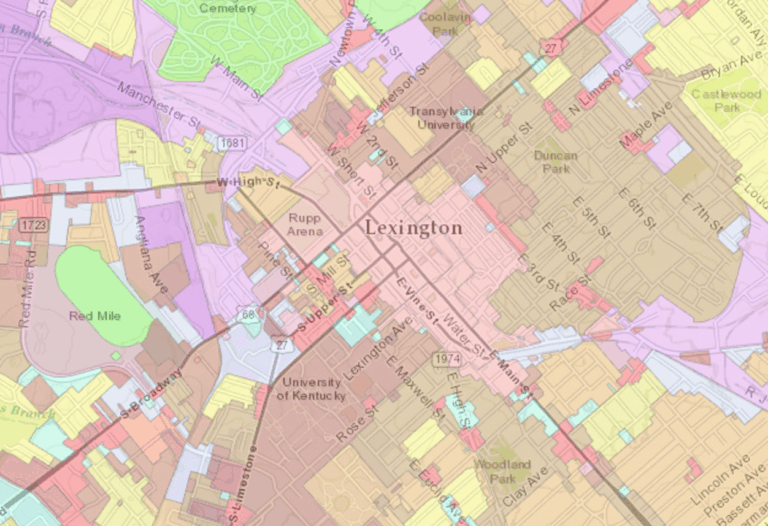Physical Address
304 North Cardinal St.
Dorchester Center, MA 02124
Physical Address
304 North Cardinal St.
Dorchester Center, MA 02124
Recently, I met someone who was trapped in a terrible apartment. Why “trapped”? For months (if not years) she had been in an adversarial relationship with both her landlord and her neighbors, but she can’t quite bring herself to leave. Why not? First, she is in a rent-stabilized apartment, and is afraid to give that up because such units are hard to find. Second, because of rent stabilization, she had made the sort of capital investments in her apartment–such as repairs–that are normally made by landlords, but neglected when they are overseeing these price controlled units. By contrast, in a normal city, my friend’s dysfunctional relationship with her apartment would have ended long ago: either the landlord would have evicted her (something very difficult in New York), or she would have moved to someplace less atrocious.

President Trump has threatened to withhold all federal funds from so-called sanctuary cities–municipal governments that do not enlist their police departments in the president’s mass deportation plan. If he makes good on his threat, cities that insist on maintaining their sanctuary status can offset revenue losses with two policies: liberalizing land-use regulation and depoliticizing public land sales. It’s unclear exactly how much money each city would lose by maintaining its sanctuary status, but New York City, to name one example, relies on federal funding for 10% of its budget, according to state comptroller estimates. A sudden drop of that magnitude would devastate many jurisdictions, and Miami-Dade County has already caved. However, a handful of cities with high rents and very restrictive land-use regulations could dramatically increase property tax revenue and the value of city-owned real estate through liberalization. Millions of Americans would love to live in cities like New York, Los Angeles, San Francisco, Seattle, San Jose, Austin, Portland, and Denver, but legal restrictions on what can be built limit the number of housing units available and increase the cost of each unit. Some estimates have found that regulation alone accounts for fifty percent of the cost of housing in San Francisco. At the same time, land-use regulation has the opposite effect on the price of land itself. A plot of land with limited legal potential for development is worth much less than a plot a developer could use to build a large, lucrative building. Economist Keith Ihlanfeldt has found that the decrease in land values more than offsets the increase in home prices—meaning some cities are decreasing potential revenues by restricting development. San Francisco has large neighborhoods of single-family homes where rent levels would sustain large apartment towers. The drastic mismatch between what is currently allowed and what consumers demand suggests that land values would skyrocket if restrictions were relaxed. […]
1. This week at Market Urbanism: If Landlords Can Profit, Homes Must Be Great Investments, Right? by Emily Hamilton A childless couple might purchase a four-bedroom home in a good school district for the future, meaning that they end up over-consuming housing for their yet unborn children. If this hypothetical couple decided to rent until their children were school-age instead, they would likely be able to save and invest a substantial amount by spending less on housing in the near term. The Disconnect Between Liberal Aspirations And Liberal Housing Policy Is Killing Coastal U.S. Cities by Shane Phillips There really is something inherently flawed in the way we’ve approached housing policy for the past several decades (at least), and I would argue that it comes down to a kind of cognitive dissonance on three key issues…. 2. Announcement Market Urbanism reader Kyle Zheng alerted us to his blog TwoFiveSeven.org. It includes a “Master City” page that connects readers, in very user-friendly fashion, to just about every urban issues blog in America. There’s even a built-in feature to add any blog he may’ve missed. This site is a great resource for urbanists far and wide. 3. Where’s Scott? Scott Beyer has arrived in the San Francisco Bay Area, settling in the Merritt Park neighborhood of Oakland. His two Forbes articles this week were America’s ‘Inner City’ Problem, As Seen In One Baltimore Neighborhood and The Case For Localizing Federal Transportation Policy This underlies a longtime trend, in which states of largely rural and suburban character get more federal funding per tax dollar paid than urban ones. It is particularly pronounced for transportation funding. Scott also did a radio interview about his cross-country trip, on Sacramento’s KFBK Home Show. He appears at the 20:40 mark. 4. At the Market Urbanism Facebook Group Elizabeth Lasky wants to start a political meme: “Mothers for more housing” […]
[This post was originally published on the blog Better Institutions] The people who live in coastal urban cities tend to be a pretty liberal bunch. We’re leading the country on minimum wage laws, paid sick leave, climate change mitigation, and a host of other important issues. We care deeply about equality of opportunity, and we’re willing to invest our time and money to advance that effort—even if the people we help don’t always look like us or come from the same neighborhood, state, or even country. I’m proud to count myself among their number. And then we turn to housing. Maybe it’s just because we’re doing great on so many other fronts, but when I look at our inability to solve the housing crisis in places like San Francisco, New York, and Washington, D.C., I’m left feeling nothing but depression and hopelessness. It’s all the more frustrating because unaffordable housing might be the most important economic problem facing residents of liberal U.S. cities, and we’re perfectly, comprehensively, and unmistakably blowing it. The causes of this failure are too numerous to ever fully enumerate in a single blog post, and, admittedly, some are out of the hands of cities themselves. But I don’t want to be too forgiving—state and federal policy plays a role, for example, but liberal U.S. cities are also typically located in liberal U.S. states, and federal policy applies equally to all, including the cities that have managed to remain affordable. There’s also the impact of global capitalism on a few world class cities, but it’s hard to feel genuine pity for places where foreign investors are willing to dump billions of dollars. Boo-hoo. At it’s heart this is a problem of liberal governance and/or policy, and we need to face it head on. We can’t blame this on someone else. It’s our […]

Homeownership boosters use many arguments in favor of buying rather than renting, one of which is that purchasing a home is a key part of the path toward a lifetime of financial success. They often say that renters are helping landlords profit when they would be better off paying their own mortgage instead. But a more nuanced analysis shows that it’s possible both for landlords to profit and for renting to make more financial sense than buying for some people. Someone purchasing a property to rent out will be purchasing an investment rather than a home — an emotionally fraught purchase often fueled with American Dream mythology. Because of the large transaction costs in buying and selling houses, people tend to buy the home they foresee wanting for many years after the purchase date. A childless couple might purchase a four-bedroom home in a good school district for the future, meaning that they end up over-consuming housing for their yet unborn children. If this hypothetical couple decided to rent until their children were school-age instead, they would likely be able to save and invest a substantial amount by spending less on housing in the near term. Would a landlord purchase this couple’s single family dream home? Probably not. Rather, with the same money, he might purchase a small apartment building in a less desirable part of town. These differences in purchasing decisions help to explain why landlords can profit in the same cities where people may not come out ahead by buying instead of renting. In addition to having disparate motivations when purchasing property, a potential landlord likely has other comparative advantages that make him more likely to profit from real estate relative to the average homebuyer. He may have above-average knowledge of which neighborhoods are likely to see […]
1. This week at Market Urbanism: The Rural Libertarian As A Historical Anomaly by Sandy Ikeda I believe the positive correlation between political conservatism and libertarianism and rural or “agricultural” living is an historical anomaly; that historically the countryside has been a great obstacle to liberty while cities have been the places where liberty and the fruits of liberty have flourished. Burrowing Owls, Comic Books, and Telling Stories That Change the World by Jeff Fong Translating the article’s information, ideas and arguments into a visually consumable format, however, makes it accessible to a much larger group of people. For every person that read the original article, there are probably fifty who would thumb through the comic book if left out on your coffee table. 7 Reasons To Oppose Los Angeles’ Neighborhood Integrity Initiative by Shane Phillips It’s a really bad plan, but calling Measure S “bad” doesn’t go nearly far enough. It is, in fact, the Donald Trump of ballot initiatives. It’s a cynical effort to co-opt a legitimate sense of frustration—frustration felt by those who haven’t shared in the gains of an increasingly bifurcated society—and to use that rage and desperation for purely selfish purposes. 2. Announcement: Kim-Mai Cutler, a Bay Area journalist, launched a kickstarter for her upcoming comic book about the need for more housing. Saturday is the final day of the campaign. 3. Where’s Scott? Scott Beyer will spend most the upcoming week meandering his way from Los Angeles to San Francisco, stopping in Malibu, Santa Barbara, Monterey and other coastal cities. His Forbes article this week was about his Year Spent Traveling Through America’s Fast-Growing Sunbelt The popular explanation is that people are seeking warmer climates. This is likely somewhat true–but regulatory climates also factor in. Economic Freedom rates, which in America have been a driver of […]

[This piece was originally published on the site Better Institutions.] On March 7th, Los Angeles is going to vote on the type of city it wants to be. The vote will be over Measure S, formerly known as the Neighborhood Integrity Initiative (NII), which seeks to limit housing development in the city. Backers of the initiative claim that City Council is too beholden to developers, and that the pace of new housing and commercial development in the city is out of control. They also express concern that “mega projects” are making Los Angeles less affordable, since few new homes are being targeted at low and moderate income households. It’s a really bad plan, but calling Measure S “bad” doesn’t go nearly far enough. It is, in fact, the Donald Trump of ballot initiatives. It’s a cynical effort to co-opt a legitimate sense of frustration—frustration felt by those who haven’t shared in the gains of an increasingly bifurcated society—and to use that rage and desperation for purely selfish purposes. It invites us to vent our frustrations and, in so doing, to further enrich those who helped to engineer our ill fortune. And as with Trump, a Measure S victory will roll back the clock on years of steady progress. Since I think there are a lot of folks out there who genuinely haven’t made up their minds about the initiative, or aren’t yet familiar with it, I’d like to summarize some of the most important reasons to oppose it when it comes time to vote this March. 1. IT WILL MEAN FEWER AFFORDABLE HOUSING UNITS FOR LOW INCOME HOUSEHOLDS. The Coalition to Preserve LA, which is backing the initiative, is turning this into a referendum on housing development in Los Angeles. They’re arguing that new homes have “wiped out thousands of […]
[This article, originally published on the site Tech for Housing, has been updated. Mai-Cutler’s kickstarter has a few days left. You can donate here.] How Burrowing Owls Lead To Vomiting Anarchists (Or SF’s Housing Crisis Explained) is Kim Mai-Cutler’s 2014 TechCrunch masterpiece exploring the history of Bay Area land use policy. It was the first investigatory piece to thoroughly survey the political, economic, and historical precursors of today’s housing crisis. And in explaining the problems that plague San Francisco, it provided the intellectual spark for nearly two years of grass roots organizing and advocacy. And now there’s a kickstarter to turn it into a comic book. As it stands, the kickstarter has raised over 16K in pledges (I personally pledged $100 last week). This total means a professional artist can work on the project full time and produce a finished product come March. Turning KMC’s tome on Bay Area land use into a graphic novel might seem a frivolous use of resources to some, but let me tell you why this is actually important. Burrowing Owls is the seminal work on Bay Are Housing. It’s also over 10,000 words long. That means that as good as it is, there was only going to be a small audience of wonkish individuals that would ever be able to wade through the entire thing. Translating the article’s information, ideas and arguments into a visually consumable format, however, makes it accessible to a much larger group of people. For every person that read the original article, there are probably fifty who would thumb through the comic book if left out on your coffee table. So if you’ve got a few bucks, please consider making a pledge. And after that, pass the message along. Ideas matter, but so do the ways in which we choose […]

People in the American Midwest are said to be on average more conservative and more libertarian than people who live on the East and West Coasts. And that in turn is because people in rural areas are said to be more strongly tied to the traditions of individualism and self-reliance than those in big cities such as New York, Los Angeles, Chicago—who politically are more statist and tend to see government as a first-responder to perceived economic and social problems. We could go back and forth arguing with conflicting evidence on urbanity and ideology that depend on, for example, whether you use “Republican” and “Democrat” as proxies for “right-wing” and “left-wing,” whether you’re comparing states or counties, and so on. So for the sake of argument I will concede that in today’s United States “urban” means statist and “rural” means conservative and libertarian. Does it follow then that people who live in dense cities are necessarily more statist than people who live in lower-density rural areas, exurbs, and suburbs? I think not. I believe the positive correlation between political conservatism and libertarianism and rural or “agricultural” living is an historical anomaly; that historically the countryside has been a great obstacle to liberty while cities have been the places where liberty and the fruits of liberty have flourished. (I place “agricultural” in quotation marks because only about 2 percent of Americans actually live on farms.) American Conservatism and the Libertarian Movement There are at least two meanings attached to the word “conservative.” The more general meaning refers to someone who has an above-average attachment to certain ideas and ways of living that are considered traditional. Now, few people like change as such and everyone has an attachment to at least some ideas of the past, whether conservative or liberal, libertarian or […]

Lexington, Kentucky is a wonderful place, and that’s getting to be a problem. There’s nothing intrinsically wrong with the city: its urban amenities, thriving information economy, and unique local culture have brought in throngs of economic migrants from locales as exotic as Appalachia, Mexico, and the Rust Belt. The problem, rather, is that the city isn’t zoned to support this newfound attention. Over the past five years, the city has grown by an estimated 18,000 residents, putting Lexington’s population at approximately 314,488. Lexington has nearly tripled in size since 1970 and the trend shows no signs of stopping, with an estimated 100,000 new residents arriving by 2030. Despite this growth, new development has largely lagged behind: despite the boom in new residents, the city has only permitted the construction of 6,021 new housing units over the past five years—not an awful ratio when compared to a San Francisco, but still putting us firmly on the path toward shortages. The lion’s share of this new development has taken the form of new single-family houses on the periphery of town. Create your own infographics. Sources: ACS/Census Bureau At the risk of sounding like a broken record, there’s nothing intrinsically wrong with single-family housing on the periphery of town. Yet in the case of Lexington, it’s suspect as a sustainable source of affordable housing. Lexington was the first American city to adopt an urban growth boundary (UGB), a now popular land-use regulation that limits outward urban expansion. As originally conceived, the UGB program isn’t such a bad idea: the city would simultaneously preserve nearby farmland and natural areas (especially important for Lexington, given our idyllic surrounding countryside) while easing restrictions on infill development. Create your own infographics. Source: Census Bureau The trouble with Lexington is that the city has undertaken […]